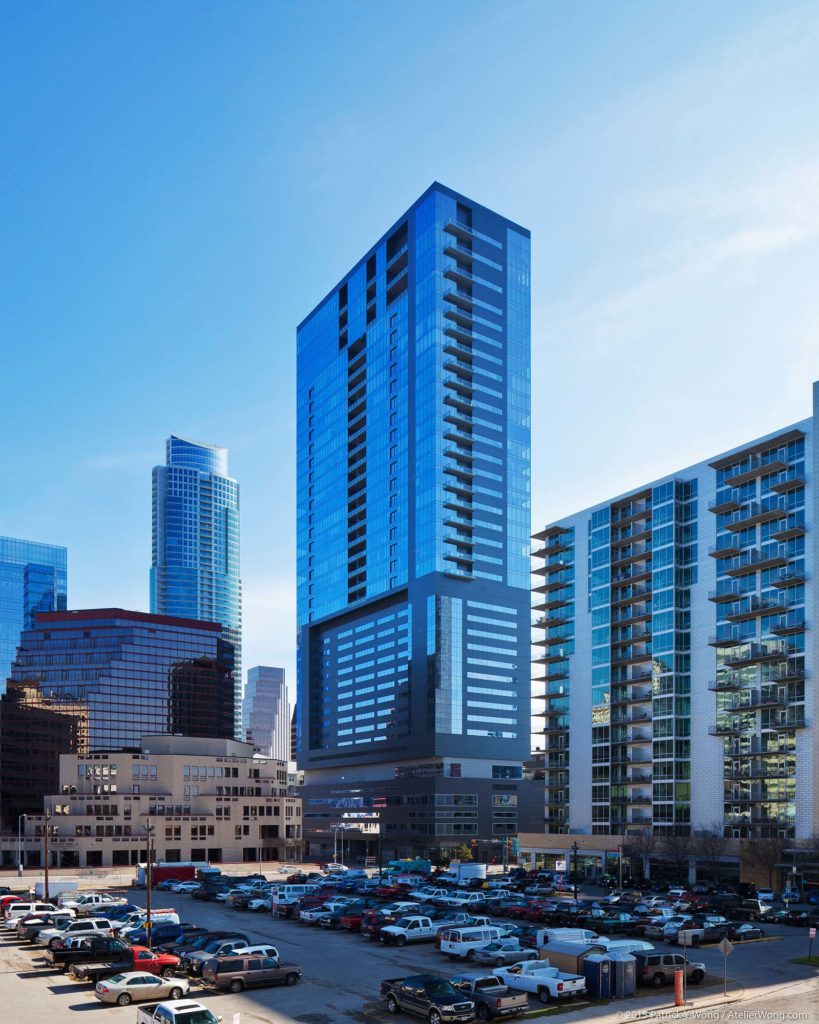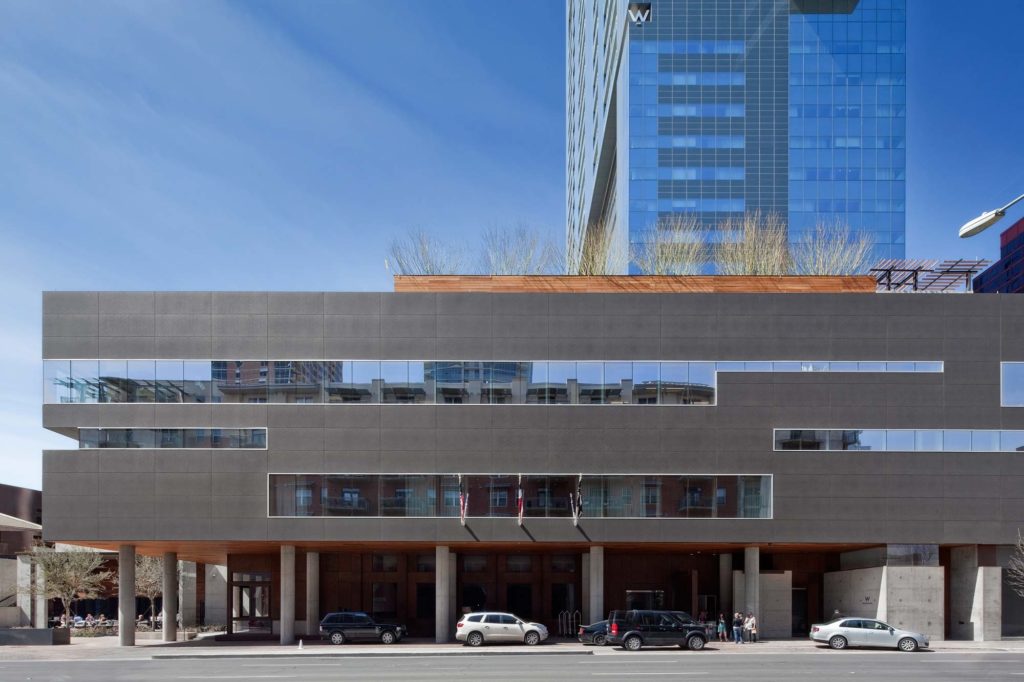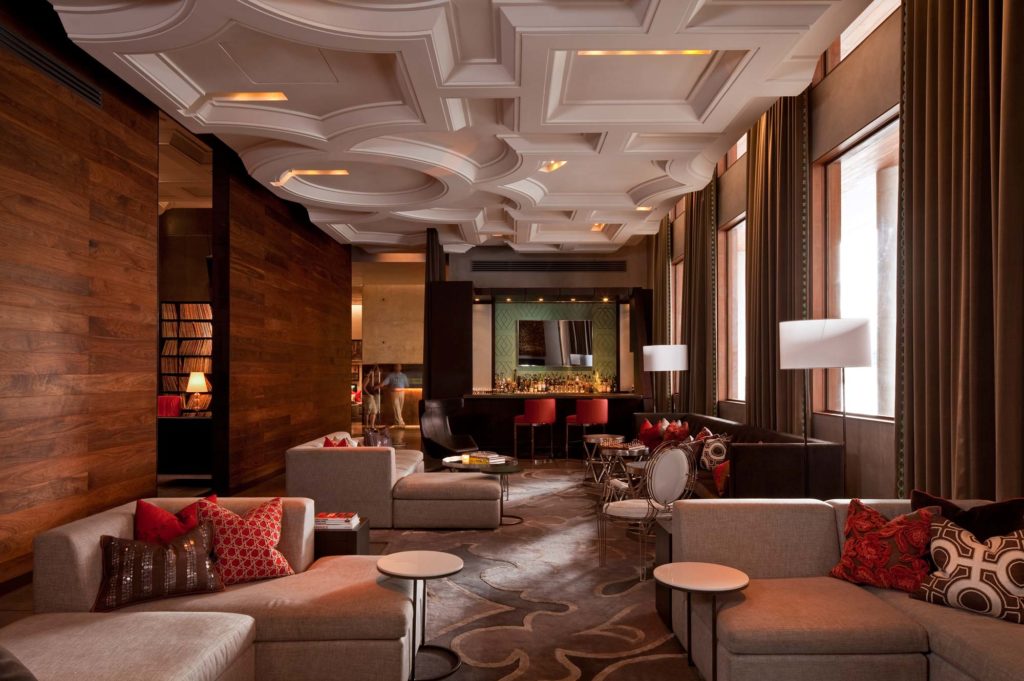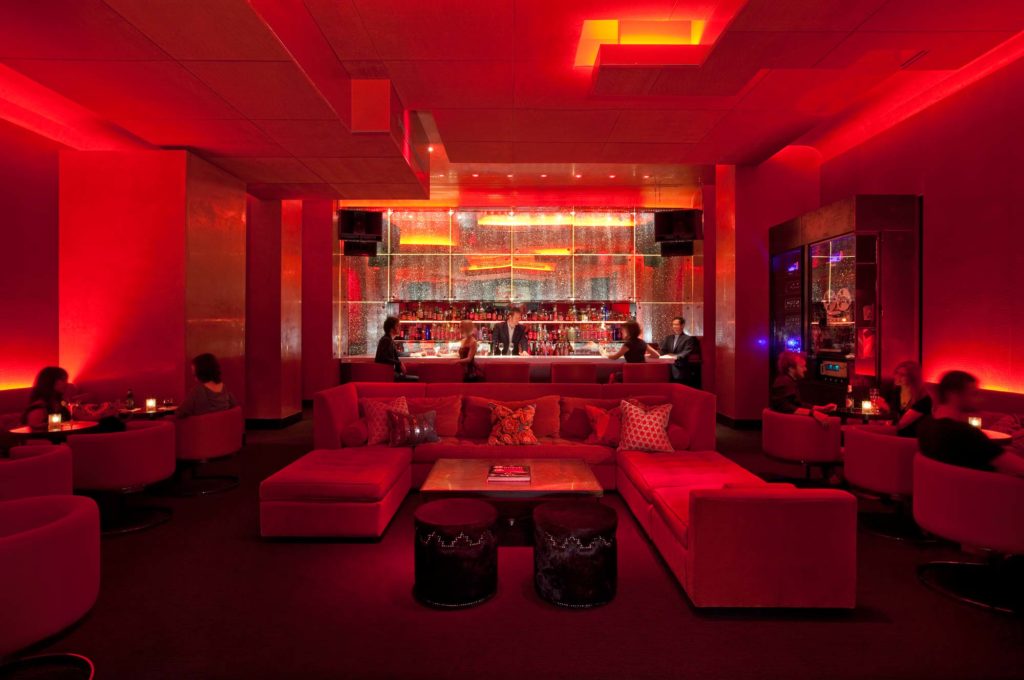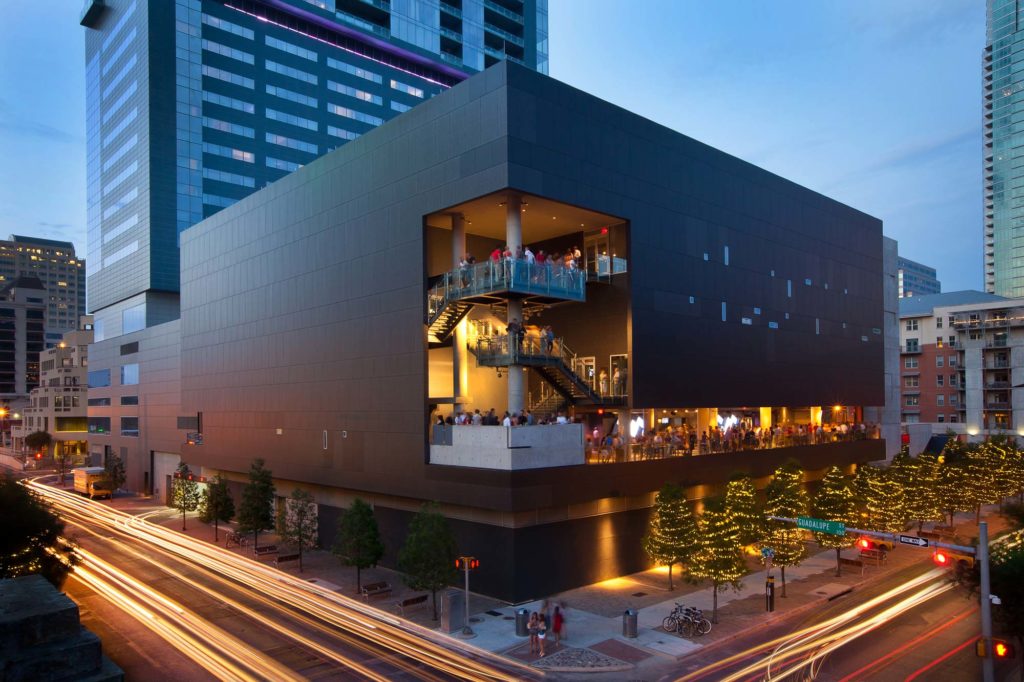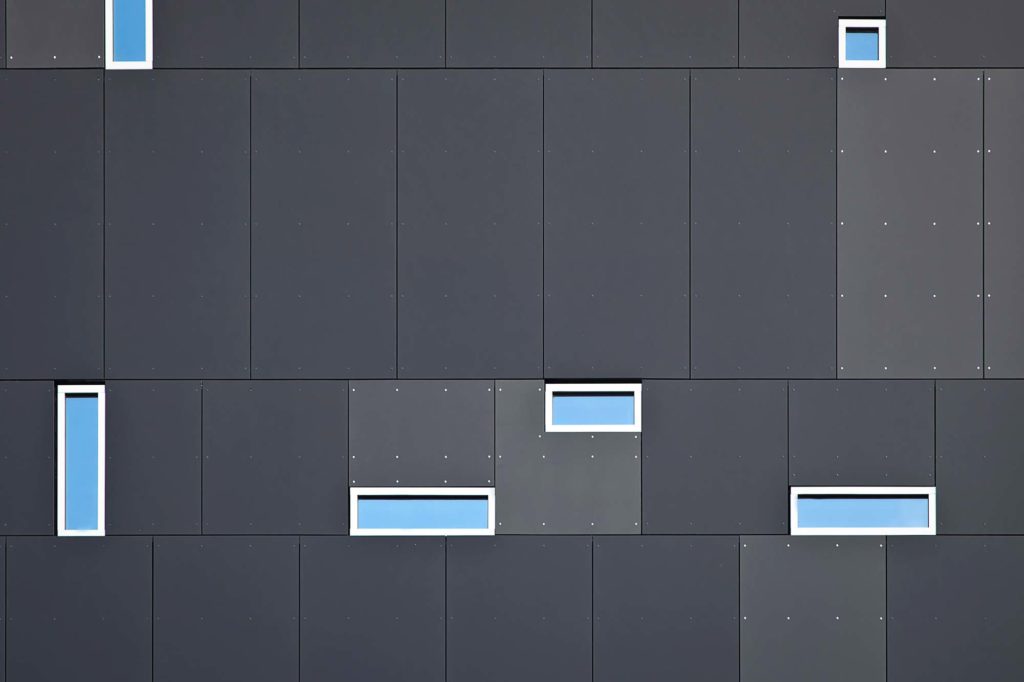With its sleek and striking presence looming over City Hall, Block 21 seems to embody the two sides of Austin’s personality. On the one hand is the desire to hold onto the laid-back ethos encapsulated by Austinite Richard Linklater’s 1991 film Slacker, while on the other hand is the desire to appeal to big tech (and big dollars) through luxury developments.
The tower’s restrained design could be described as “look at me, but don’t look at me.” In a skyline of older beige-and-blue boxes, Block 21’s contemporary combination of recessed balconies, matte black panels, and dark reflective glass actually draws attention to the structure. While the building hosts the venerable ACL Live, it belongs to the new Austin more than the old.
The architects pursued an ambitious sustainability agenda in conjunction with the Center for Maximum Potential Building Systems. Block 21 uses 30% less water and 37% less energy than the average building through the integration of high-efficiency fixtures and systems, as well as a climate-responsive envelope design that reduces heat gain from the sun. Clever strategies such as discounted parking for electric vehicles encourage environmentally friendly behavior among inhabitants.
A pocket of open space at the southeast corner of the site features artist Clete Shields’s bronze statue of local music legend Willie Nelson, who appeared on the first episode of ACL Live in 1974. The sculpture is part of the city’s Art in Public Places initiative, which dedicates 2% of eligible capital improvement project budgets to commission or purchase site-specific art. Austin’s public art collection is on display at parks and facilities across the city, serving as an important reminder of civic culture, tradition, and innovation. – Bud Franck
Sustainability Highlights
LEED Silver (U.S. Green Building Council)
AEGB 4-Star (Austin Energy Green Building)

